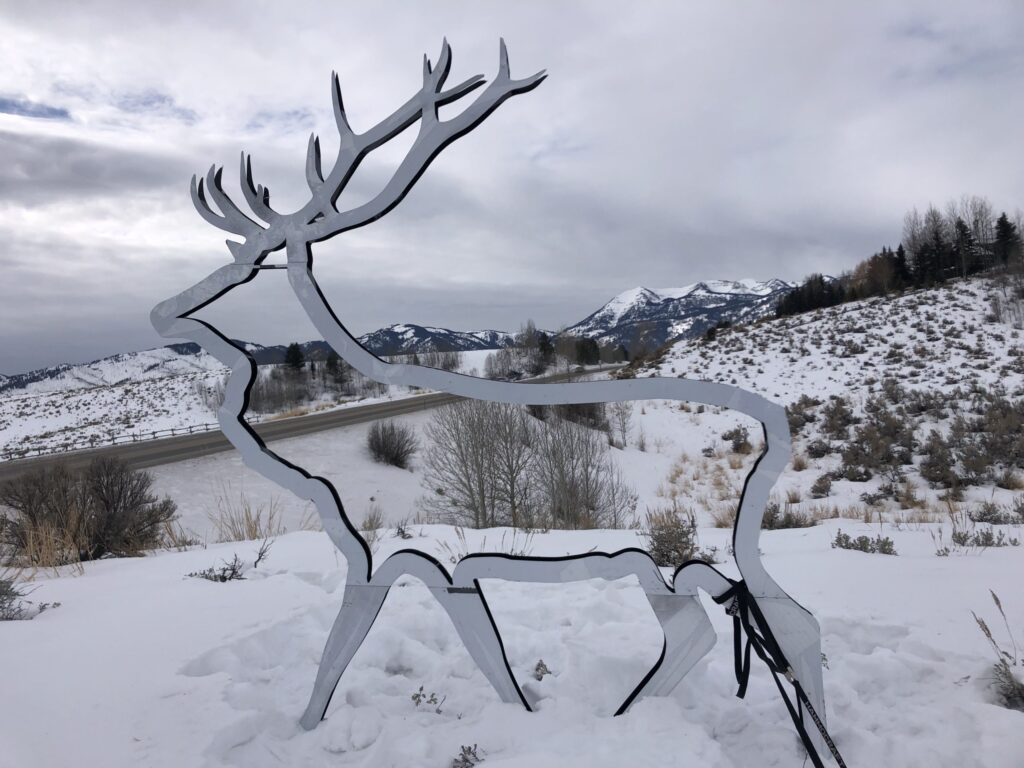When one of the Mountain Academy 4th and 5th grade classes learned that the highway near their school is a problematic area for wildlife-vehicle collisions, they wanted to do something about it. Bari Bucholz, their science teacher, got right to work creating a project-based unit around their concern for local wildlife. Developing innovative curriculum that connects to student interest is second nature to Bari, who has been inspiring K-5th grade students through engaging place-based learning for more than fifteen years.
At its core, place-based education (PBE) is anytime, anywhere learning that leverages the power of place and connects learners to communities and the world around us. It’s goal? To increase student engagement and agency, boost learning outcomes, impact communities, and promote a greater understanding of global issues. The story of how Bari’s class helped bring life-sized elk silhouettes to their campus brings the list of PBE design principles to life.

Place-Based Education Design Principles
Learner-Centered: personally relevant and enables student agency
Inquiry-Based: grounded in making observations, asking questions, making predictions, and collecting data
The students needed data that could help them understand more about wildlife presence in the area. With support from Renee Siedler of the Jackson Hole Wildlife Foundation, they installed a trail camera on campus in the fall to track wildlife movement. Students were highly motivated to analyze data and determine which species of large mammal was most likely to be affected by highway traffic and whether the highway nearest their school was a hotspot.

Community as Classroom: local experts, experiences, and places are part of the expanded definition of a classroom
Morgan Graham, a GIS and Wildlife Specialist with the Teton Conservation District was instrumental to the project. He engaged the students by sharing infrared trail cam footage taken from testing roadside reflectors along heavy migration corridors of mule deer. Seeing live video made this community issue real for the students and took the project to a whole new level. Heather Overholser, Director of Teton County Public Works, also supported their effort by sharing how the County supports wildlife crossings, both presently and moving forward. Importantly, they learned that the stretch of highway close to their school is the second-highest priority in the County Master Plan and has future plans for mitigating wildlife conflict.
Design Thinking: systematic approach for students to make meaningful impact in their communities through the curriculum
Students used the Teton County GIS mapping tool to determine the most effective location for placing a reminder of wildlife presence that would be visible to drivers. They also carefully considered collision hotspots. Two members of the community, Bland Hoke of Bland Design and Chris Colligan with the Greater Yellowstone Coalition, created life-sized elk masterpieces and helped the students install them.

Interdisciplinary Approach: curriculum matches the real world in that traditional subjects are taught using an integrated and frequently project-based approach where all learners are accountable and challenged
Projects like this can’t happen without buy-in from the students and support from the community. As Bari Bucholz observed, “It takes a village and this is a great example of how local partnerships greatly enhance real-world education at Mountain Academy, while simultaneously making meaningful contributions to our community.”
Local to Global: local learning serves as a model for understanding global challenges, opportunities, and connections
From now on, the ears of these students will perk up when they hear about wildlife mitigation measures. What might have stayed a dry scientific term now conjures memories of hard work, hands-on experiences, and collaboration with a wide range of community partners. Not only that, they will see reminders of their difference-making potential every time they catch sight of the two elk silhouettes on their school campus.


